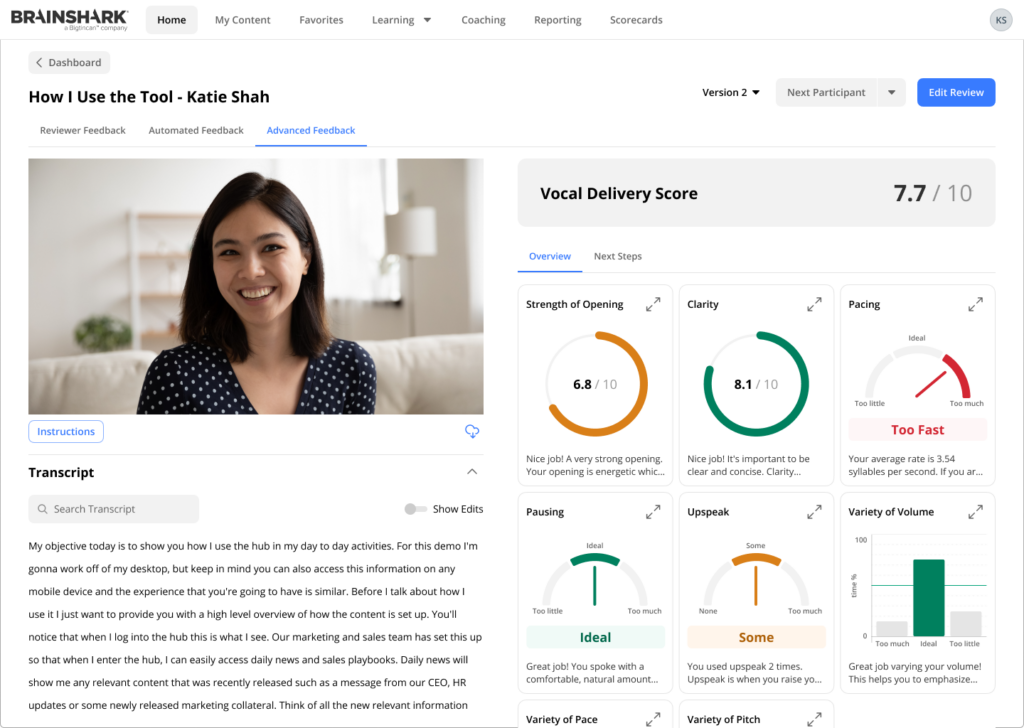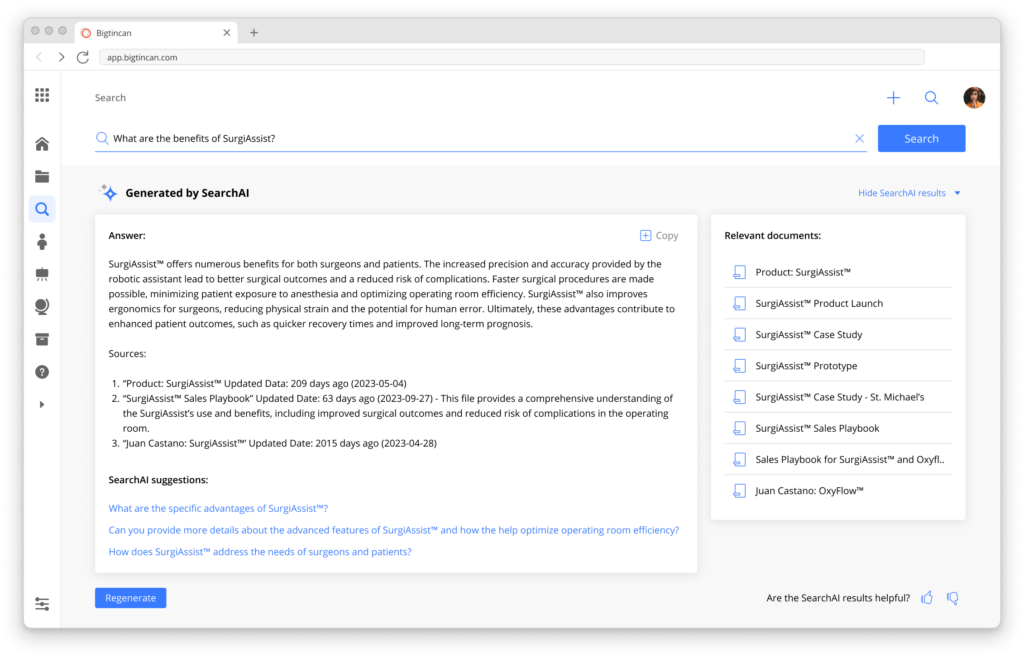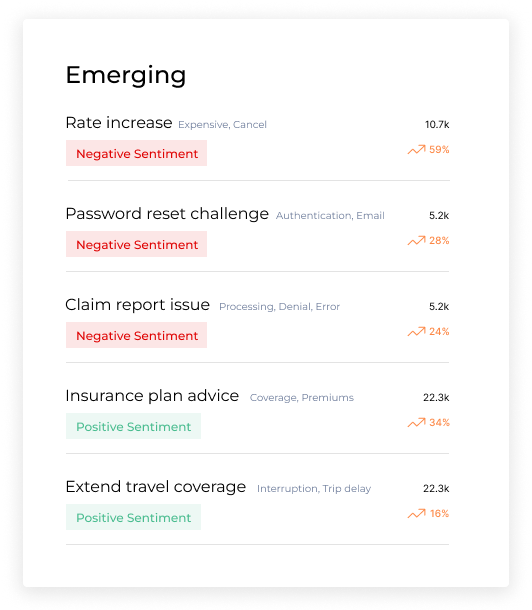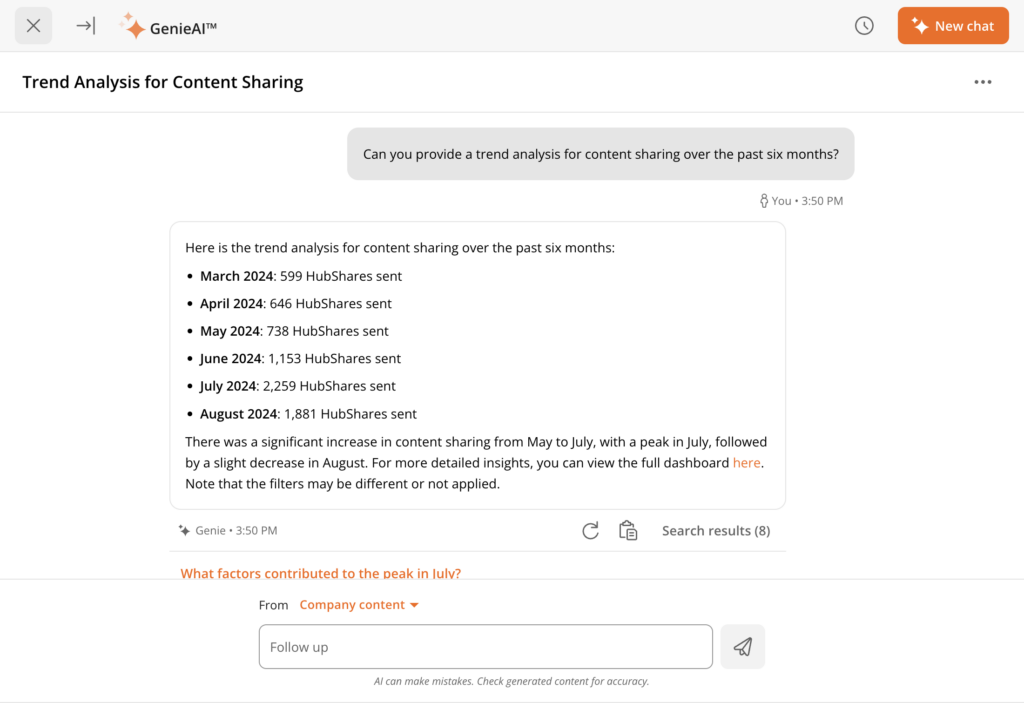If you're tired of hearing the same old promises about AI and wondering if it’s really worth it, this article’s for you. We’re going to break down seven practical ways AI is making a real difference in contact centers with real-world examples that show just how helpful these tools can be to the people who use them.
So, what does AI in action look like? Here are seven popular uses of AI in contact centers:
1. Conduct unlimited roleplaying sessions without a peer
Most contact center managers don’t have time to review lots of call recordings and offer ongoing feedback. In this case, agents can use tools like RolePlayAI to simulate customer interactions and practice on their own. Whether it’s a routine inquiry or a complex complaint, they can test out any scenario with the AI — without worrying about booking a chat with their managers.
Plus, they can practice whenever they want to. This on-demand capability helps them get access to support when they need it — instead of only when their peers or managers can give feedback.
Over time, it helps agents increase their confidence and offer better and faster customer service.

2. Get unbiased feedback and live coaching
Human feedback processes can be layered with personal biases, limited attention spans, and lack of objectivity. With AI, you can overcome these issues. Tools like CoachingAI analyze every call recording or customer interaction and give in-depth feedback for agents to act on.
They get real-time feedback or, at the very least, immediate feedback right after calls. For example, if a customer’s tone is too aggressive and the agent is unable to empathize and stay calm, the tool gives pointers on how to do that better in the future.
This level of objective feedback makes on-the-job training an ongoing process within your workflows. Plus, the feedback is specific to each agent — so they don’t have to worry about getting generic advice like, “Maintain a neutral tone.”
The side benefit? Managers also get detailed reports on their agent’s performance.

3. Reduce conversation length with faster service
Part of the reason why agents take too long to resolve issues is the inability to find the answers quickly themselves. Customers want to talk to a live agent, so they can get quick answers specific to their situation. But if your agents take minutes to find that one file or support center link, it only increases the time to resolution — and the likelihood of a dissatisfied customer.
“One of the biggest challenges I see organizations face is knowledge transfer/access to information,” shares Jeff Oskin, CEO of Newlogiq. “The position tends to be a high churn position and as such, workers with knowledge generally are few and far between. As a result, the most well-run organizations are finding ways to eliminate the tenure requirement by providing agents with access to the right information when it is needed.”
With SearchAI, you can avoid this. Since it’s trained on your documentation specifically, agents can use the chat interface to “talk” to their documents.
For example, if they want to know if a specific plan includes training for a core capability, there’s no need to rummage through five shared drives to find that information. Just use the search box to find the right one-pager as well as a summary of the search topic.

4. Understand customer sentiment
It’s not always easy to discern a customer’s tone in an email, or even a call. Here, you can use AI tools like Dashbot to understand customer sentiment and tackle the issue accordingly.
These tools rely on natural language processing (NLP) technologies and parse the call/message to understand what they’re feeling. It analyzes the customer's tone, word choice, and even subtle vocal cues to label the sentiment.

Source: Dashbot
Some tools offer this capability for live calls too. And if they do, they offer suggestions to de-escalate the conversation. Over time, agents tend to have better outcomes and the overall CX improves.
5. Route calls easily using automated IVRs
When a customer calls the contact center, you can use an IVR (interactive voice response) system to understand their spoken concerns. Instead of pressing multiple buttons, AI can process the customer’s speech, interpret the intent, and route the call to the right department.
Also, in some cases, it can offer a self-service option for customers who prefer that. For example, say they want to know their fixed deposit’s balance or something similar. They can just input their account number, and the AI-based system can verify their credentials on the backend.
These capabilities reduce resolution time, lighten the agent’s workload, and increase customer satisfaction.
6. Get predictive forecasts of high-volume periods
Many contact centers struggle to determine when their call volumes will peak. Maybe they have a fair idea based on years of experience — but without concrete analysis, it’s hard to say.
Use AI tools to crunch the numbers instead.
These tools can review historical data and tell you when call volumes will spike, like during new product launches or seasonal events. Ultimately, they allow you to plan and redirect resources to the right places — while making sure your contact center maintains its service quality.

The best part? The AI learns as you get more data. Your forecasts get more accurate over time and so do your resource planning capabilities. And some tools like Genie Assistant allow you to query your data in natural language and get back plain language summaries of trends and forecasts.
7. Understand what customers really want from you
A key piece of the support puzzle is finding the right assets at the right time. Many times agents keep searching for assets using specific keywords, but nothing turns up. These zero-hit searches indicate there’s a key asset missing in your support library, and it’s time to fill that gap.
You also learn more about gaps in your support center — like FAQs, product documentation, or additional training needed for reps — and use this information to devise a concrete support strategy. For example, if customers are searching for specific articles in your help center or calling for particular queries, maybe it’s time to update your library.
Use AI tools to crunch that data and surface these search terms instead. This way, when it’s time to refresh that library you don’t have to survey support/sales teams all over again and build these assets faster.
Build a better contact center for employees and customers
AI might sound intimidating, but the truth is, it’s already helping contact centers work smarter. From reducing hold times to boosting customer satisfaction, AI can help your contact center teams tackle some of their biggest challenges. And you don’t have to be a tech expert to see the benefits — it’s all about making your daily operations smoother and more efficient.
If you’re ready to take your contact center to the next level, the use cases outlined here are a great place to start.
